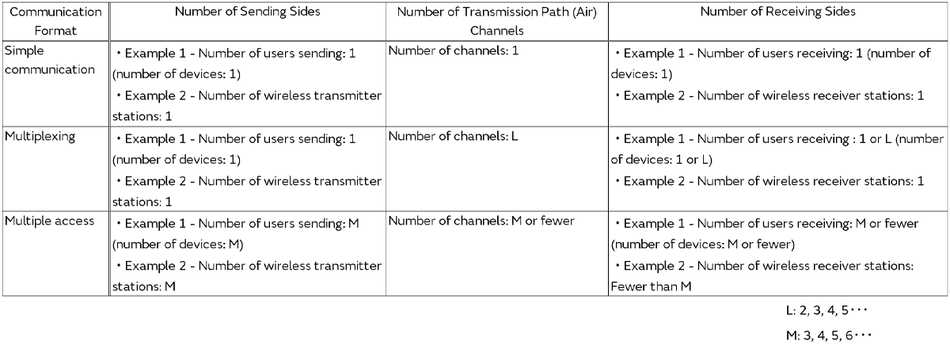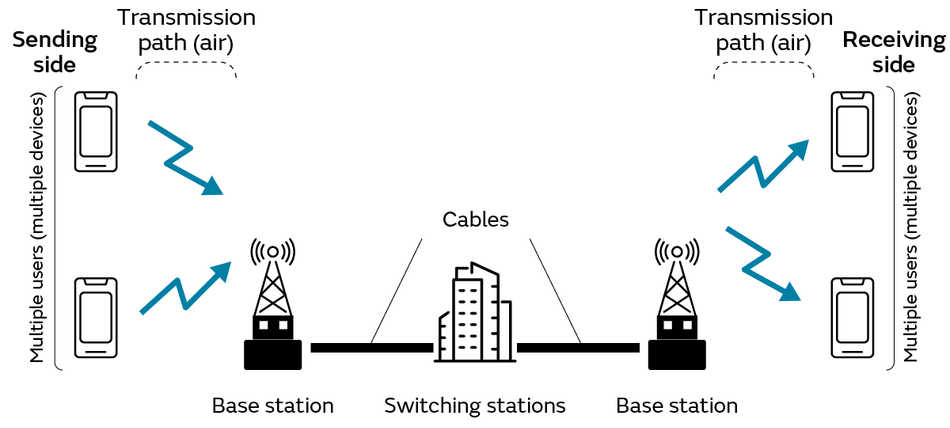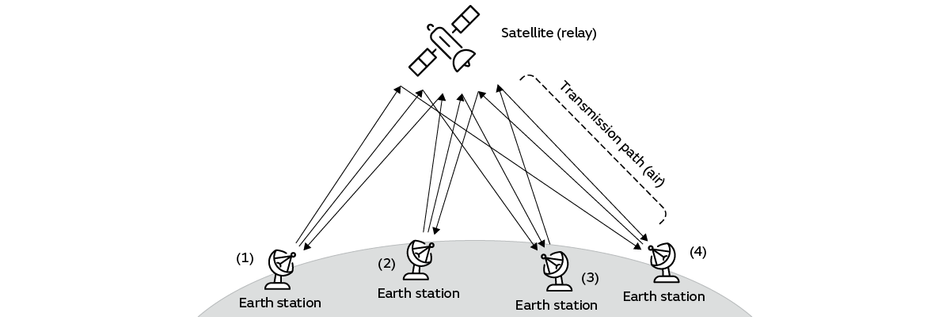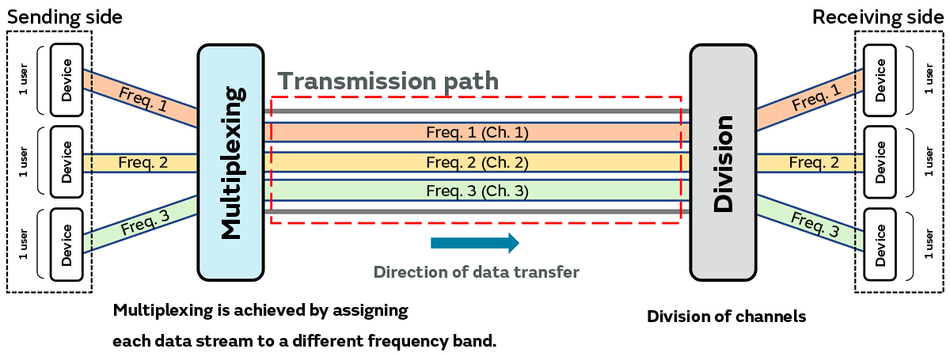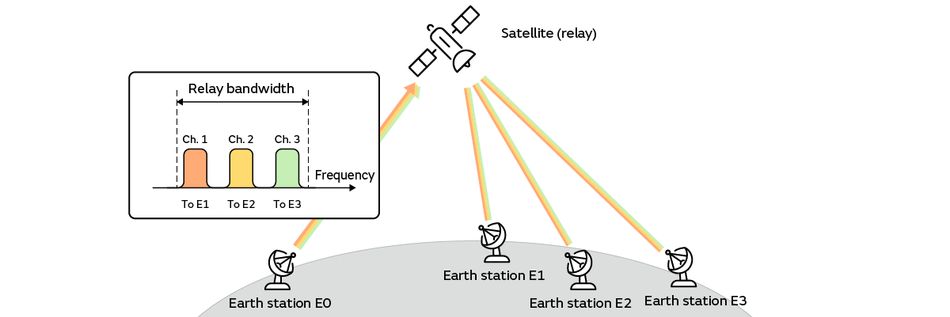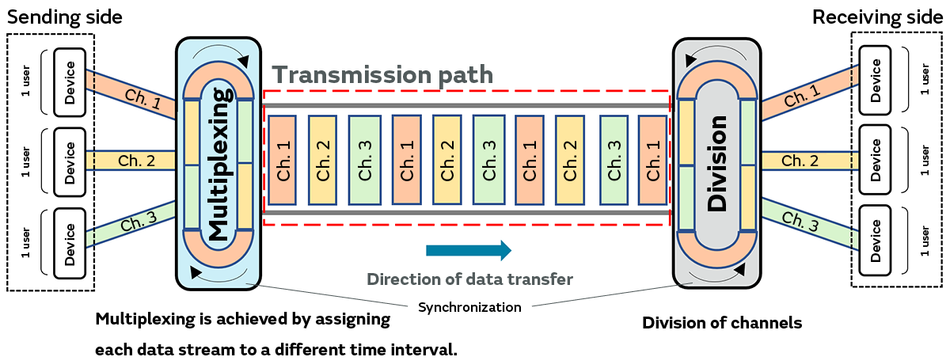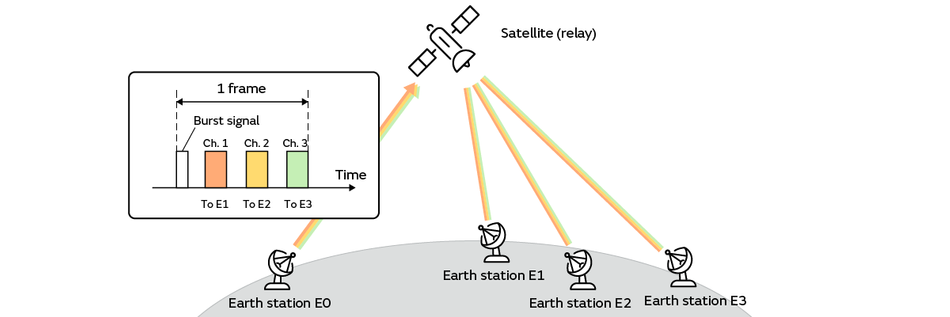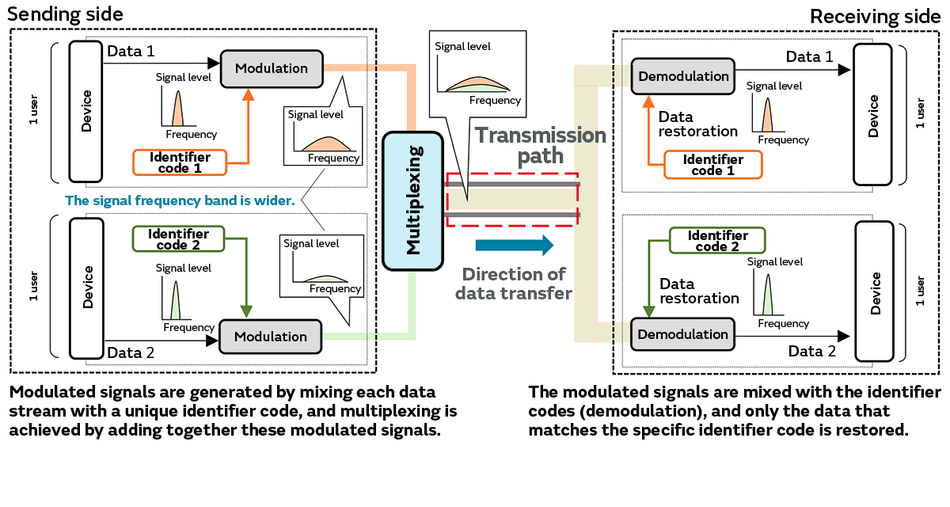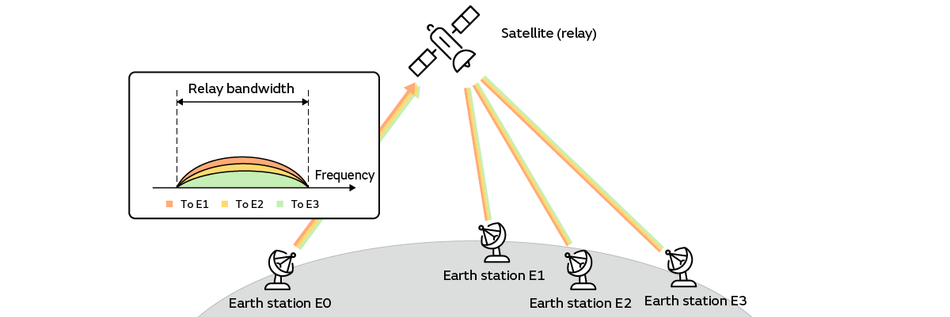FDMA, TDMA, and CDMA Multiple Access: Effective Utilization of Signals (Bandwidth) in Wireless Communication
Everyday our smartphones transmit and receive audio, images, videos and other data. While many people are using the same signal band at the same time, transferring huge amounts of data, we have come to think this is perfectly normal.
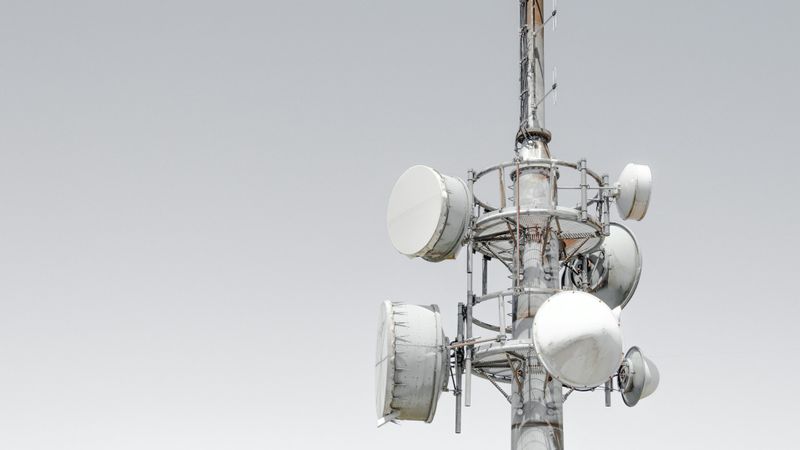
Photo by Tony Stoddard on Unsplash
This article was first published on
article.murata.comEssential Technologies that Enable Effective Utilization of Signal Bandwidth for Wireless Communication
Everyday our smartphones transmit and receive audio, images, videos and other data. While many people are using the same signal band at the same time, transferring huge amounts of data, we have come to think this is perfectly normal. This is possible thanks to technologies that prevent problems when sending and receiving different types of data, such as the overlapping of data or interference from noise. This article uses graphical illustrations to describe two such technologies aimed at enabling efficient utilization of frequency bandwidth (or bandwidth for short),*1 which is to say the efficient utilization of radio signals:
• “multiplexing,” which allows multiple data streams to be transferred at the same time, and
• “multiple access,” which makes use of multiplexing technology to allow simultaneous connections with multiple users.
Note that multiple access (also called “multiaccess”) is an important technique contributing to the 5th Generation Mobile Communication System (5G), which aims to support very large numbers of simultaneous connections (1 million connections per square kilometer), including connections to “things” such as home appliances and IoT devices.
*1 The wider the frequency bandwidth (bandwidth) used for wireless communication, the higher the data communication speed (transmission speed). We plan to explain the relationship between frequency bandwidth and transmission speed in another article.
Transmission of Multiple Data Streams by Wireless Communication
Multiplexing: Effective Utilization of a Single Transmission Path (Air)
The basic model of a communication system, whether using wired or wireless communication,*2 can be represented as shown in Figure 1 (Basic Knowledge of Wireless Communication: Wireless Mechanism (1)). In this model, the sending side, transmission path, and receiving side are conceived of as one unit, and the stream of data transmitted at a particular time is conceived of as one unit. (We will refer to this as “simple communication” for the time being.) Now, if the sender could send multiple streams of data to the receiving side simultaneously, the efficiency of data sending and receiving would increase. This is what led to the idea of transmitting multiple streams of data simultaneously over a single transmission path. This technology is called multiplexing.
*2 Generally speaking, the transmission path of a communication system is either cables or air, and such systems are classified as either wired or wireless communication based on the transmission path used for telecommunication.
Multiple Access: Implementing Wireless Communication among Multiple Users without Interference
If we think of multiplexing as sending multiple streams of data at the same time, superimposed on each other, we can say that for multiplexing the elements of sending side and receiving side do not exist. In the case of wireless communication, the element of “transceiving” (sending and receiving combined) can be added to multiplexing to allow multiple users to share a single transmission path to transmit multiple streams of data at the same time. This is called multiple access.*3
Table 1 shows the relationship between multiplexing and multiple access. To enable comparison with multiple access, we will say that multiplexing uses one sending side and one receiving side. Also, since multiplexing has multiple channels*4 and multiple access also has multiple channels, we can say that multiple access is based on multiplexing.
*3 In communication-related books and documents, as well as website content, multiplexing and multiple access are sometimes referred to without distinction, depending on what is being described. In the present article, multiple access is described as a technique that makes use of multiplexing to allow multiple users to share a transmission path to send and receive data.
*4 Channel: As used here, this can be thought of simply as a route (communication path) along which a radio signal waveform carrying a single data stream travels. The term channel is used in this sense to refer to a signal line. In the case of wireless communication, one can describe a case in which 10 different signal waveforms are transmitted (multiplex transmission) as a communication path with 10 channels, for example.
In actual wireless communication, rather than cases where a transmission path is being shared to transmit data from one user to another user, or from one user to multiple other users, cases where multiple users of a mobile communication system (Figure 2) or satellite communication system (Figure 3) share a transmission path are more common. Therefore, the discussion that follows focuses on the workings of multiple access. Multiplexing is explained in < Column > How Multiplexing Works: FDM, TDM, and CDM.
How Multiple Access Works: FDMA, TDMA, and CDMA
As we mentioned in the preceding section, multiple access is a technique that enables multiple users to communicate without interference by sharing multiplexed channels.
The basic types of multiple access, from the least to the most advanced, are as follows:
• Frequency-division multiple access (FDMA)
• Time-division multiple access (TDMA)
• Code-division multiple access (CDMA)
Below we explain how each of these work, using conceptual diagrams of each type of multiple access and conceptual diagrams based on Figure 3 using satellite communication as an example.*5
*5 Recent wireless communication standards, such as 4G-LTE mobile communication or Wi-Fi 6/6E and Wi-Fi 7 personal communication, use a scheme called orthogonal frequency-division multiple access (OFDMA) that is based on modulation and multiplexing technology called orthogonal frequency-division multiplexing (OFDM).An explanation of OFDM is omitted here because it would require a background knowledge of complex subjects such as data multivaluation, quadrature amplitude modulation (QAM), and the orthogonal properties of data signals on frequency spectra. We plan to cover this subject in another article.
Frequency-Division Multiple Access (FDMA)
FDMA divides up data streams from multiple users and assigns them to channels using different frequency bands, all of which share a single transmission path (Figure 4-1). Adoption of FDMA began in the 1980s, and it was used to carry cellphone and car phone calls under the analog 1st generation mobile communication system (1G).
Figure 4-2 shows a conceptual diagram of the use of FDMA for satellite communication. Figure 4-2 shows an arrangement based on Figure 3 in which one sending side (earth station E0) and multiple receiving sides (earth stations E1 to E3) are used to transmit multiplexed data signals.
The data signal from earth station E0, consisting of data streams targeted at earth stations E1 to E3, modulated and assigned to different frequencies arranged at equally spaced intervals within the bandwidth supported by the satellite relay, is sent in a manner that ensures that the adjacent signal frequency bands do not overlap (to prevent interference). When earth stations E1 to E3 receive these signals, they are divided up according to the frequency each station is able to receive, and the data streams are extracted.
Time-Division Multiple Access (TDMA)
TDMA divides up data streams from multiple users into uniform time intervals and assigns them to channels, all of which share a single transmission path (Figure 5-1). Adoption of TDMA began in the 1990s, and it was used to carry mobile phone calls (GSM, PDC, PHS, etc.) under the digital 2nd generation mobile communication system (2G).
Figure 5-2 shows a conceptual diagram of the use of TDMA for satellite communication. As in the preceding section, Figure 5-2 shows an arrangement based on Figure 3 in which one sending side (earth station E0) and multiple receiving sides (earth stations E1 to E3) are used to transmit multiplexed data signals.
The data signal is sent from earth station E0, delimited by time frames and consisting of “slots” used as channels, excluding the standard burst signal*6 embedded in each frame, and each channel is assigned one of the data streams targeted at earth stations E1 to E3. Then, at each earth station from E1 to E3 the signal is divided up in a manner synchronized with the transmission timing of earth station E0, and the data streams are extracted.*6 Note that TDMA was adopted for satellite communication in addition to FDMA from around 1985.
*6 To ensure stability and prevent interference with communication, TDMA requires that the channel switching speed, etc., be synchronized between the sending side and receiving side. Earth station E0 inserts a signal called a burst at the beginning of each frame for synchronization control.
Code-Division Multiple Access (CDMA)
CDMA generates signals in which the data streams of users are mixed with unique identifier codes, and the signals of all the users are overlaid within the same frequency band and conveyed via a single transmission path (Figure 6-1). CDMA is used to carry mobile phone calls under the 3rd generation mobile communication system (3G) introduced in the 2000s.
Figure 6-2 shows a conceptual diagram of the use of CDMA for satellite communication. As in the preceding section, Figure 6-2 shows an arrangement based on Figure 3 in which one sending side (earth station E0) and multiple receiving sides (earth stations E1 to E3) are used to transmit multiplexed data signals.
Earth station E0 mixes the identifier codes assigned to earth stations E1 to E3 on the receiving side with the data signals targeted at each earth station, generating signals with frequency bands wider than that of the original data signals, and adds them together to create a multiplexed signal that it sends to the satellite relay.
Earth stations E1 to E3 each receive the multiplexed signals from the satellite relay, mix in the earth station identifier codes to divide up the signals, and extract data only from the signal that matches their own identifier code.
Note that adoption of CDMA for satellite communication began in the 1990s.
Summary
As we have seen, multiple access is an important technique for wireless communication, from the aspect of enabling wireless communication among multiple users without interference. Now we would like to delve into a little more detail before concluding this article.
Multiple access schemes have become more advanced over time, evolving from FDMA to TDMA to CDMA, but it is no exaggeration to say that the increased frequency utilization efficiency*7 accompanying these advances has been a key aspect of the development of wireless communication. For example, achieving better frequency utilization efficiency in mobile communications makes it possible to increase both the number of users and the overall volume of data that can be transmitted.
This is touched on briefly in this article, but the multiple access scheme used by 4G, the most widely used mobile communications system at present, is orthogonal frequency-division multiple access (OFDMA), which is said to provide twice the frequency utilization efficiency of 3G using CDMA. In turn, 5G uses non-orthogonal multiple access (NOMA), which delivers even better frequency utilization efficiency than OFDMA.
So, to repeat, multiple access, which has advanced with the aim of increasing frequency utilization efficiency, can be considered indispensable to future developments in wireless communication as well as expanded adoption.
*7 Frequency utilization efficiency: As used here, this can be simply be understood as the data transmission speed (in units of bits per second (bps)/Hz) per unit of frequency bandwidth. Note that frequency utilization efficiency is sometimes referred to as spectrum efficiency or bandwidth efficiency.


